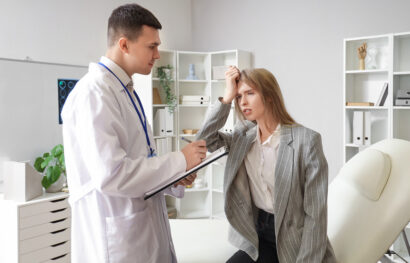 Headaches and migraines can cause a busy and productive day to come to a screeching halt. Migraine is the world’s sixth most disabling condition. According to the U.S. National Library of Medicine, this neurological condition affects around 12% of adult Americans.
Headaches and migraines can cause a busy and productive day to come to a screeching halt. Migraine is the world’s sixth most disabling condition. According to the U.S. National Library of Medicine, this neurological condition affects around 12% of adult Americans.
Fortunately, there are several ways to prevent headaches and migraines. Let’s go through these methods in this article.
Determine and Avoid Headache Triggers
While some headaches may develop without warning, many individuals have specific triggers. Figuring out what yours are is one way to prevent getting a pounding headache. Some migraine and headache triggers that you should look out for are:
- Foods or food additives
- Drinks such as alcohol and caffeine
- Hormonal changes and medications
- Sensory stimuli such as loud noises, flashing lights, and strong smells
- Weather changes
Headache triggers are not the same for everyone. What causes a headache for some people may not be an issue for you.
If you frequently experience headaches or migraines, it may help to start a headache journal. You can begin by recording what was happening or what you were doing before developing a headache. Some factors to consider include:
- Stress levels
- The food or drinks you consumed
- Any medication you took
- How much sleep you had
- Any physical exertion
- Your emotional state
Your headache journal can help you figure out if there’s a pattern to your episodes when filled out over time. This information will come in handy once you visit a doctor to get a diagnosis, too.
Get Enough Sleep
Changes in sleep habits are a common cause of headaches. How much or how little sleep you get can affect how you feel the next morning.
Try to get sufficient sleep—seven to nine hours—every night. Also, implement a strict sleep routine. As much as possible, doze off and wake up at the same time daily. You can log how many hours of sleep you get in your headache journal.
Exercise Regularly
Regular exercise can prevent migraines and headaches. That’s because exercise produces endorphins, brain chemicals that work as natural painkillers. Physical activity can also improve the quality of your sleep.
Consider stretching exercises, which are easy to do at home. These activities blend stretching, breathing, and relaxation to reduce stress. You can try taking a walk outside, as well.
However, don’t push yourself too hard. Exercising at high altitudes or in hot and humid weather might put you at greater risk of getting headaches.
Try Relaxation Techniques
You can prevent and relieve tension headaches through relaxation techniques. Some popular options for this type of migraine and headache prevention include:
- Tai chi
- Yoga
- Massage
- Meditation
Alternatively, you can undergo biofeedback, a technique that can reduce the frequency of your migraines. It uses special equipment that monitors involuntary physical responses to headaches. Biofeedback teaches you to control your body’s response to stress. During a 30-60 minute session, the machine will detect increases in your:
- Heart rate
- Breathing rate
- Pulse
- Brain activity
- Temperature
- Muscle tension
While biofeedback is generally safe, consult with your doctor before trying this technique. It might not work for some people.
Take Medications
Over-the-counter pain relievers usually work for occasional tension headaches. These medications can reduce symptoms during a migraine. However, taking these types of drugs might lead to a daily and long-term headache.
Your doctor might prescribe preventive medications for headaches that are frequent, severe, or long-lasting. These medications help reduce the frequency and severity of migraines. These medications include:
- Antidepressants
- Anti-seizure medication
- Blood pressure-lowering medications
Make sure to note all of the medications you’re taking and inform your doctor. Follow your doctor’s prescription and avoid excessive usage.
Try Botox Injections
Botox injections are an excellent option for people experiencing chronic migraines (15 or more episodes a month). These can prevent headaches from developing after only two sessions. It is the only injectable treatment for headaches approved by the FDA.
This treatment works by blocking the release of chemicals needed for pain transmission. Your doctor will inject the Botox around the pain fibers in your head, where it enters your nerve endings. This process prevents the development of migraines and headaches.
Headache and Migraine Treatment in Blue Springs, MO
If you’re looking for headache and migraine treatment, visit Core Medical Center today. To know more about our services, call our Blue Springs, Missouri, office at (816) 427-0201 . If you want to schedule a visit, you can request an appointment online. We look forward to providing you with lasting headache and migraine relief!




